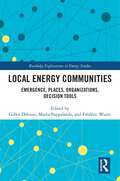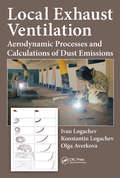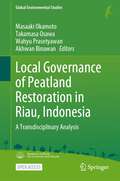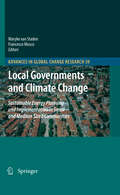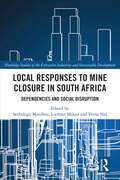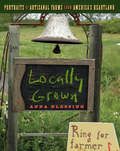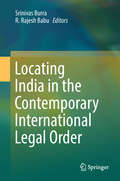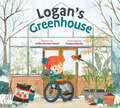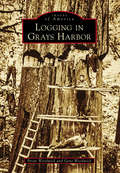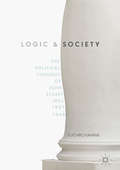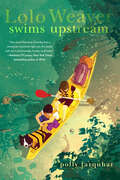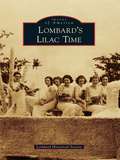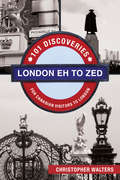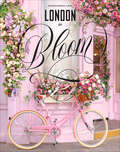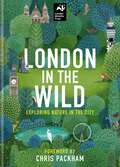- Table View
- List View
Local Energy Communities: Emergence, Places, Organizations, Decision Tools (Routledge Explorations in Energy Studies)
by Gilles DebizetThis book draws on social science analysis to understand the ongoing dynamics within and surrounding local energy communities in reliably electrified countries: Belgium, Canada, Colombia, France, Germany, India, the Netherlands, Spain, Switzerland and the United Kingdom. It offers a comprehensive overview of recent results and thus outlines a diversity of drivers and levers for scaling up energy communities or, at least, local energy sharing. Analysing the main types of energy communities such as collective self-consumption, citizen cooperatives and peer-to-peer digital platforms, the book does not only raise new questions for social scientists, but also offers a comprehensive overview for all those contributing to the circular economy and the decentralization of energy production in inhabited areas where energy consumption is concentrated. This book provides input for the ongoing debates in many European countries implementing the national law on the European directives for energy communities. Furthermore, without evading the antagonism between cooperative and market approaches, or the contradictions between different issues, the book outlines the innovative decision-making tools that can facilitate the development of local energy production and sharing systems. As well as being of interest to postgraduates and researchers in the field of energy studies, this book will be vital to energy professionals looking to support local energy communities’ decision-making and design, who wish to consider sociological, organizational and territorial dimensions.
Local Energy Governance: Opportunities and Challenges for Renewable and Decentralised Energy in France and Japan (Routledge Explorations in Energy Studies)
by Magali Dreyfus and Aki SuwaLocal Energy Governance: Opportunities and Challenges for Renewable and Decentralised Energy in France and Japan examines the extent of the energy transition taking place at a local level in France and Japan, two countries that share ambitious targets regarding the reduction of GHG emissions, their share of renewable energy and their degree of market liberalization. This book observes local energy policies and initiatives and applies an institutional and legal analysis to help identify barriers but also opportunities in the development of renewable energies in the territories. The book will highlight governance features that incubate energy transition at the local level through interdisciplinary contributions that offer legal, political, sociological and technological perspectives. Overall, the book will draw conclusions that will also be informative for other countries aiming at promoting renewable energies. This book will be of great interest to students and scholars of energy policy and energy governance.
Local Environmental Politics in China: Challenges and Innovations
by Genia Kostka & Arthur P.J. MolKnowledge and insight in national environmental governance in China is widespread. However, increasingly it has been acknowledged that the major problems in guiding the Chinese economy and society towards sustainability are to be found at the local level. This book illuminates the fast-changing dynamics of local environmental politics in China, a topic only marginally addressed in the literature. In the course of building up an institutional framework for environmental governance over the last decade, local actors have generated a variety of policy innovations and experiments. In large measure these are creative responses to two main challenges associated with translating national environmental policies into local realities. The first such challenge is apolicy implementation gap stemming from the absence of the state capacity necessary to the implementation of environmental measures. The second challenge refers to the need for local non-state actors to engage in environmental management; oftentimes such aparticipation gap contributes to implementation failures. In recent years, we have seen a multitude of initiatives within China at the provincial level and below designed to bridge bothgaps. Hence, the central aim of this book is to assess these experiments and innovations in local environmental politics.This book was originally published as a special issue of the Journal of Environmental Policy and Planning.
Local Exhaust Ventilation: Aerodynamic Processes and Calculations of Dust Emissions
by Ivan Logachev Konstantin Logachev Olga AverkovaThis book examines the computations of gas-borne dust flows in local exhaust ventilation systems and provides practical recommendations for the energy-efficient containment of dust emissions. It discusses basic approaches to operational energy savings for local exhaust ventilation systems, including shaping intake openings of open local exhaust devices after determining boundaries of vortex areas, increasing the working distance of suction openings, inhibiting carryover of dust into aspiration network by promoting rotational aerodynamic fields, and more. Color photos throughout illustrate dust behavior, flow lines, and patterns.
Local Experiences of Mining in Peru: Social and Spatial Transformations in the Andes (Routledge Studies of the Extractive Industries and Sustainable Development)
by Gerardo Castillo GuzmánThis book uses a multimethod approach to examine local experience of contemporary mining development in the Peruvian Andes, creating an understanding of the transformations that rural societies experience in this context. Mining is a major component of economic growth in many resource endowed countries, whilst also causing mixed social, cultural, and environmental effects. Most current literature on contemporary mining in Peru is largely focussed on conflict; however, in this text, the author takes a differing approach by examining the experiences of families in the vicinity of Rio Tinto’s La Granja exploration copper project, Northern Peru, an area with great significance due to the mining investment and development, which has taken place over the past 25 years. The book first provides a critical discussion about production of space theories, and debates on spatial mobility, highlighting their relevance to understanding large-scale mining developments, especially in the Peruvian Andes. The following chapters analyze spatial transformations mining development has prompted, focusing on four axes: access to space, production, mobility, and representations of space. A comprehensive narrative is constructed drawing on diverse voices and perspectives, including those of family heads and their partners, local leaders, company employees, and social scientists. The book concludes by discussing how the findings challenge some of the current accounts of the social effects of mining developement on rural communities and pose significant implications for sustainable development programs and place-based practices. By taking an interdisciplinary approach, this book will appeal to a wide audience including geographers, social anthropologists, and social scientists interested in the social effects of mining as well as researchers interested in current Latin American Studies and Rural Development.
Local Girls: An Island Summer Novel
by Jennifer O'ConnellWhen Kendra's best friend Mona returns to Martha’s Vineyard for the summer after spending the school year in Boston, they discover that their friendship--along with a lot of other things--has changed.
Local Governance of Peatland Restoration in Riau, Indonesia: A Transdisciplinary Analysis (Global Environmental Studies)
by Masaaki Okamoto Takamasa Osawa Wahyu Prasetyawan Akhwan BinawanThis open access book is one in a series of four volumes introducing peatland conservation and restoration in Indonesia. It focuses on local governance, in particular on regional and local perspectives in Riau, the most peat-destructed province of Indonesia. The book fills a vital gap in the existing literature that overlooks social science and humanities perspectives. Written by authors from different disciplines and backgrounds (including scholars and NGO activists), the approaches to the topic are various and unique, including analysis of GPS logs, social media, geospatial assessments, online interviews (conducted due to the Covid-19 pandemic), and more conventional questionnaires and surveys of community members. The chapters cover an interdisciplinary understanding of peatland destruction and broadly offer insights into environmental governance. While presenting combined studies of established fieldwork methodologies and contemporary technology such as drones and geospatial information, the book also explores the potential of long-distance research with rural communities through online facilitation, which was brought about by Covid-19, but that may have longterm implications. Readers will gain a comprehensive understanding of the complexities surrounding peatland conservation and restoration and recognize the significance of locally inclusive approaches that use contemporary but accessible technologies to sustainably govern the globally important resource of peatland. That approach would be useful for other environmentally fragile but important regions and give some ideas to achieve the United Nations’ SDGs for 1)No Poverty, 5)Gender Equality, 13)Climate Action, 15)Life of Land.
Local Governments and Climate Change
by Maryke Van Staden Francesco MuscoThe focus of this publication is on how small and medium-sized communities in Europe are effectively responding to climate change, with a particular focus on different approaches used in sustainable energy planning and implementation. A number of cases presented show the result of different (and often combined) motivations and actions. The most effective responses are those with a holistic, integrated and long-term approach, addressing both climate change mitigation and adaptation, based on citizen and other local stakeholder involvement. Local climate action means addressing different sectors, from buildings to waste, but also involving the industry and business sectors. The focus is on engaging communities on a large scale. Local governments play an essential role in this regard: creating a vision for the community, developing relevant strategies, implementing effective policies and rolling out actions - together with other actors. They lead citizens, act in an exemplary manner, and improve energy use in services. The context they act in is also important, influencing approaches taken, with (enabling or blocking) framework conditions, financing, and energy security addressed, as well as a number of important international and European community-specific developments are presented.
Local Greens: Cities and Twenty-first Century Environmental Problems
by Katrina M. Wyman Danielle Spiegel-FeldAs the federal government failed to take ambitious action to limit climate change in the early 21st century, many cities in the US pledged to step into the void. Networks of city governments and philanthropists offered support and cities invested their own resources in sustainability offices. However, cities made limited progress in reducing their greenhouse gas emissions in the first two decades of this century. Local Greens provides a clear-eyed analysis of the potential for big city governments to address society's most pressing environmental problems in the near term. Through original case studies of New York's environmental policy efforts in the early 21st century, the book examines the promise and perils of turning to cities to tackle climate change. Drawing on an analysis of cities' strengths and weaknesses, the book outlines a high-level agenda for urban environmental policy for a sustainable future.
Local Responses to Mine Closure in South Africa: Dependencies and Social Disruption (Routledge Studies of the Extractive Industries and Sustainable Development)
by Lochner Marais Sethulego Matebesi Verna NelThis book investigates mine closure and local responses in South Africa, linking dependencies and social disruption. Mine closure presents a major challenge to the mining industry and government policymakers globally, but particularly in the Global South. South Africa is experiencing notable numbers of mine closures, and this book explores the notion of social disruption, a concept often applied to describe the effects of mine growth on communities but often neglecting the impact of mine closures. The book begins with three theoretical chapters that discuss theory, closure cost frameworks and policy development in South Africa. It uses evolutionary governance theory to show how mining creates dependencies and how mining growth often blinds communities and governments to the likelihood of closure. Too easily, mining goes ahead with no concern for the possibility, or indeed inevitability, of eventual closure and how mining communities will cope. These impacts are showcased through eight place-based case studies from across South Africa, one focusing on mine workers, to demonstrate that mine closure causes significant social disruption. This book will be of interest to students and scholars researching the social impacts of mining and the extractive industries, social geography and sustainable development, as well as policymakers and practitioners working with mine closure and social impact assessments.
Local Wonders: Seasons in the Bohemian Alps
by Ted KooserFrom the book: Ted Kooser describes with exquisite detail and humor the place he calls home in the rolling hills of southeastern Nebraska known as the Bohemian Alps. Nothing is too big or too small for his attention. Memories of his grandmother's cooking are juxtaposed with reflections about the oldfashioned outhouse on his property. In the end, what makes life meaningful for Kooser are the ways in which his neighbors care for one another and how an afternoon walking with an old dog, or baking a pie, or decorating the house for Christmas can summon memories of his Iowa childhood. This writer is a seer in the truest sense of the word, discovering the extraordinary within the ordinary, the deep beneath the shallow, the abiding wisdom in the pithy Bohemian proverbs that are woven into his essays.
Locally Grown
by Anna BlessingThis beautiful new book by 30-year-old writer and photographer Anna H. Blessing introduces readers to the story of the modern heartland farm. The book explores how sustainable practices--and close ties to high-profile chefs and restauranteurs--have propelled the "locally grown" culinary movement into a central feature of life in major cities like Chicago. Blessing lays out the rich histories of 25 midwestern farms through beautiful photography, fascinating anecdotes from farmers and chefs, and up-close looks at what makes each farm so unique.Interest in sustainable farming has been growing rapidly across the country and around the world, emphasizing locally produced and grown foods in place of the mass-marketed offerings from corporate consortia. When inhabitants of major cities choose to purchase food raised in nearby farms, they not only support vital satellite economies, but also improve the social and ecological quality of life along with the environmental sustainability of the world around them.Now there are also innumerable top-tier dining establishments, led by esteemed chefs like Charlie Trotter and Paul Kahan, who scour farmers markets for natural ingredients and develop personal business relationships with small-time farmers to supply their restaurants with the best and most sustainable foods. Locally Grown shows how both long-standing and newly founded farms, along with urban farms and metropolitan nonprofit organizations like Growing Power and City Provisions, are boosting the sustainable food movement throughout Chicago and its neighborhoods. Each chapter profiles a different farm, outlining locale, scale, production, and inner workings while also revealing the captivating backgrounds of each farmer. Blessing shows how each farm and farmer are making efforts to improve sustainability, and describes the behind-the-scenes practices that have made locally grown food an increasingly important part of America's food culture.Contributions from each farmer, and from chefs they work with, are included in every chapter, lending an intimate feel to Locally Grown--recipes, how-to's and Q&As that together create a riveting account of the rapidly changing world of modern farming. Beyond profiling these Midwest farms, Locally Grown points out the best places to find, buy, and eat sustainably grown foods, as well as details on visiting the farms.
Locating India in the Contemporary International Legal Order
by R. Rajesh Babu Srinivas BurraThis book brings together disparate views which attempt to locate India in the contemporary international legal order. The essays endeavour to explore critically India’s role and attitude towards international law in various fields and its influence and contribution in the development of the latter. The contributions are also of historical value, as they analyse the present as part of a historical trajectory. Drawing upon the current and historical practices from their respective fields, the authors attempt to highlight some critical aspects involving India and international law. These aspects broadly underline India’s drift from its traditional role as an ally and proponent of the third world towards the pragmatism of self-interest, behaviour that is often compelled by internal political and economic conditions, as well as the dictates of external forces.
Locked Out Lily
by Nick LakeA startlingly original, delightfully eerie tale for 9+ readers, with stunning illustrations by a renowned and multi-award-winning artist Lily just wants things to go back to the way they were: before she got sick, before her parents decided to have another baby. So when she&’s sent away to stay with her grandmother while her mum has the baby, Lily is determined to go home. But she doesn&’t expect to find people in her house – people who look like her parents, but definitely aren&’t… Together with some unlikely animal companions, Lily must face her fears and summon the courage to break into her own house, and defeat &‘The Replacements&’ before the night is out." Allegorical and atmospheric, this is a modern classic to treasure, perfect for fans of Coraline and A Monster Calls.'A book of such wit and flair and delight: the kind of book you finish and immediately begin again, so that you can live again alongside the characters.&’ - Katherine Rundell, bestselling author of Rooftoppers
Log Cabins and Outbuildings: A Guide to Building Homes, Barns, Greenhouses, and More
by The United States Department of AgricultureHomesteading is a lifestyle that people around the world gravitate toward—and for good reason. In today&’s high-stress world, many people dream of heading off to their own cabin in the woods or to their large rural oasis to escape the anxieties and complexities of daily life, to live in a more natural state. Others have embraced the agricultural lifestyle of farming as a career, serving as fundamental contributors to sustaining society. With this classic guide from the US Department of Agriculture (USDA), learn about the architecture of rural life and the design elements of these amazing structures. This manual, originally published and distributed in 1972, includes government-issued designs and requirements for log cabins, farmhouses, firepits and barbecues, greenhouses, storage sheds, stables, and more! Black-and-white diagrams and illustrations fill these pages, displaying the intricacies and dimensions of these incredible structures in their entirety. Brimming with ideas and inspiration, Log Cabins and Outbuildings is the perfect starting point for building your new rural retreat.
Logan's Greenhouse (Where in the Garden? #3)
by JaNay Brown-WoodLogan searches for carrots in his wheelchair-accessible greenhouse in this vibrant exploration of gardening and healthy eating, from the Where in the Garden? picture book series. <P><P>Logan is organizing a pet playdate at his greenhouse for all of his friends, and his treats won’t be the same without his carrots. He’s searched and searched, but his greenhouse is filled with plenty of plants and Logan needs our help to identify them. What do we know about carrots? They’re long, orange, and have bushy leaves at the top—and, wait a moment, is that a carrot? No, that’s a turnip. Where, oh, where could those carrots be? Can you help Logan find them in time for his playdate? The third title in JaNay Brown-Wood and Samara Hardy’s Where in the Garden? picture book series stars Logan, a young boy who uses a wheelchair and accessible tools while gardening in his greenhouse. <P><P> Playful text guides young readers to hunt for visual clues and compare and contrast the unique characteristics of carrots against sweet potatoes, leeks, turnips, and other produce that grows in Logan’s greenhouse. Artist Samara Hardy brings this multi-layered story to life with vivid, cheerful illustrations created from layers of hand painted ink and watercolor texture. Back matter includes a delicious winter carrot soup recipe for little chefs and their adult helpers to try together.
Logging in Grays Harbor
by Gene Woodwick Brian WoodwickGrays Harbor reigned supreme as the "Logging Capital of the World" for 150 years. Homesteaders became loggers and hired local Indians, who had logged the area's massive trees since ancient times. Sailors, too, were hired to rig spar trees. They fearlessly plied lumber schooners across destructive waters and carried timber products to the East Coast, South America, and other foreign ports. Over time, power saws replaced crosscut saws, and logging methods evolved. Today, loggers in Grays Harbor have begun a new phase of producing timber products that is built on a heritage of strong families, good citizens, and hard work.
Logging in Mason County: 1946-1985
by Michael FredsonIn 1946, the US Forest Service and Simpson Logging Company agreed to a sustained yield unit, cooperatively managing lands for 100 years for "community stability." Championed by USFS chief William Greeley and dubbed the "Sustained Steal" by detractors, the Shelton Cooperative Sustained Yield Unit nonetheless provided jobs for returning World War II veterans. Simpson Logging built the largest logging camp in the continental United States, Camp Grisdale, which had a two-room school and a two-lane bowling alley. Shelton and McCleary were saved from becoming ghosts towns, and downtown Shelton was modernized with a shopping center, parks, and schools. Mason County's Forest Festival was a weekend celebration for 30,000 visitors that included a parade and logging shows. As the only cooperative unit established in the United States, it attracted national attention, including TV personality Arthur Godfrey. In 1961, the movie Ring of Fire was filmed above Camp Grisdale. As World War II memories faded, logging practices were challenged by notions of wilderness and recreation. Improved equipment reduced the jobs, and when Simpson withdrew from the sustained yield agreement, employees were disenfranchised.
Logic and Society: The Political Thought of John Stuart Mill, 1827-1848
by Yuichiro KawanaThis book discusses John Stuart Mill’s intellectual activity from about 1827 to 1848, namely between his recovery from his so-called ‘Mental Crisis’ and the publication of Principles of Political Economy. During this period, along with deepening his understanding of contemporary society as commercial civilization, Mill aspired to create a new system of science of society which would inquire into the nature, process of historical change, and prospects of society. Among the indispensable constituent sciences of his system, this book pays particular attention on his projected sciences of history and of the formation of character (ethology), and clarifies that the implications of his interest in these sciences were more significant for the better understanding of Mill’s political thought than many scholars have assumed.
Lolo Weaver Swims Upstream
by Polly Farquhar"Not since Ramona Quimby has a character marched right out of a book with so much bravado, humor, and heart."--Barbara O'Connor, New York Times bestselling author of WishA headstrong girl&’s quest to steal back her family&’s dog goes awry in this humorous and compassionate novel.Lolo is stuck in summer school with a teacher who is out to get her while her family is still reeling from her grandfather&’s death. Even his dog is mourning, howling outside all night and every night. Finally, lovable old Hank is sent to a farm across the lake that takes foster dogs.And it&’s all Lolo&’s fault. Lolo knows she has to get Hank back. In a tippy canoe, Lolo crosses the almost-dried-out lake to steal her dog back. But she runs into Noah, a student in her summer school class and Hank's new owner—and he loves Hank as much as she does.As Lolo&’s plan unravels and her uneasy alliance with Noah grows into a friendship, the question of what&’s best for Hank becomes muddier. Can Lolo manage to do the right thing—for once? Itch author Polly Farquhar returns to Ohio with a tale of a big-hearted girl searching for answers to tough questions in all the wrong places. Fans of Gary Schmidt will love Farquhar&’s blend of honesty, humor, and heart.A Junior Library Guild Gold Standard Selection
Lombard's Lilac Time
by Lombard Historical SocietyLombard has been called the "Lilac Village" since the late 1920s when William R. Plum, affectionately known as the "Colonel," bestowed his world-renowned lilac collection to the village for use as its first public park. Colonel Plum's 2.5-acre estate was known as Lilacia and began in 1911 after a trip to the Lemoine Lilac Gardens in France. By the time Plum passed away in 1927, he had amassed over 200 varieties of lilacs and had the largest collection of French hybrids in the world. Jens Jensen, the famous landscape architect, designed a public space out of Plum's lilac collection with winding paths of native limestone, tulips by the thousands, and a lily pond in the park. The first community-wide Lilac Festival was held in May of 1930, unveiling Jensen's Lilacia and including a Lilac Queen and Court, a pageant, parade, and wide variety of events and festivities celebrating the village's new park.
London Eh to Zed: 101 Discoveries for Canadian Visitors to London
by Christopher WaltersDiscover London — and Canada — in one guidebook! Thousands of Canadians visit London, England, every year. But what their popular guidebooks always fail to mention are the over one hundred objects, monuments, and locations in the city associated with their own home and native land. Take for example the statue of half-mad General Charles Gordon standing beside the River Thames. His capture by rebels set in motion a dramatic rescue attempt that became Canada's first overseas military mission. Then there's the world's most famous suffragette Emmeline Pankhurst. Do Canadians know she marched on syphilis in Canada after winning the vote for women in Britain? Or that a cross-eyed doctor from McGill University in Montreal became London's most notorious serial killer after Jack the Ripper? London Eh to Zed is a light-hearted and entertaining walking guide especially for Canadians. Exploring seven neighbourhoods in London, it uncovers 101 fun discoveries about our history, character, passions, and foibles. Along streets in St. James's, Greenwich, and elsewhere, readers will meet men and women like the doomed adventurer Sir John Franklin, the un-amused Queen Victoria, and the tennis-loving but luckless Prince Rupert, first governor of the Hudson's Bay Company, who never collected any HBC Rewards.
London in Bloom
by Georgianna LaneJoin acclaimed photographer Georgianna Lane and explore the flower markets, gardens, and floral boutiques of London in this full-color celebration of the flora of England’s capital. London in Bloom showcases the floral abundance of the city’s extraordinary parks, gardens, florists, and flower markets. In this companion to her popular books Paris in Bloom and New York in Bloom, Georgianna Lane takes us on a romantic floral tour of London, juxtaposing luscious blooms with intricate floral details found in iconic architecture. The book also includes: A detailed list of recommended parks, gardens, markets, and floral designers A spring tour of blossoms and blooms A field guide of common spring-blooming trees and shrubs Step-by-step instructions for creating a London-style bouquet And more Lane offers a practical travel guide for anyone planning to see London in bloom in real life. She plans out a tour of spring blossoms, with a field guide for identifying flowering trees and shrubs. She even includes a list of addresses for her favorite parks, gardens, floral boutiques, and flower markets. Lane writes, “No place, real or imagined, enchants quite like an English garden. The ornate gates, the tumbling roses, the winding paths, and the sunlight winking through branches of delicate blossoms have long inspired poetry and romance. . . . Some are intimate and secret, with secluded corners and mysterious pools where dragonflies hover or fantastic creatures might even dwell. Others are impressive and majestic, their rolling parklands reminiscent of an eighteenth-century landscape painting.” For flower lovers and Anglophiles alike, London in Bloom offers a unique and irresistible view of London, a chance to bring “poetry and romance” to your home or to give it as a gift.
London in the Wild: Exploring Nature in the City
by London Wildlife Trust'London in the Wild is a timely opportunity to get out and explore all the wild spaces and natural places that exist alongside us. Both on your doorstep and on the other side of the river.' - Chris Packham A place of cars, concrete, lights, noise and pollution, London is a harsh, unyielding landscape created to meet the needs of people, not wildlife, but if you take the time to stop and look, you'll discover it is teeming with more than 15,000 species of flora, fungi and fauna, including marsh frogs, hedgehogs, short-eared owls and dragonflies. With London in the Wild as your guide, you can explore the city from your garden, local parks and community space, but also from its wetlands, woodlands and heaths. Along the way you'll discover the best places to see bluebells in springtime, the day-to-day life of a London Tube mouse and the activities of seals who make their home in the Thames.
London in the Wild: Exploring Nature in the City
by London Wildlife Trust'London in the Wild is a timely opportunity to get out and explore all the wild spaces and natural places that exist alongside us. Both on your doorstep and on the other side of the river.' - Chris Packham A place of cars, concrete, lights, noise and pollution, London is a harsh, unyielding landscape created to meet the needs of people, not wildlife, but if you take the time to stop and look, you'll discover it is teeming with more than 15,000 species of flora, fungi and fauna, including marsh frogs, hedgehogs, short-eared owls and dragonflies. With London in the Wild as your guide, you can explore the city from your garden, local parks and community space, but also from its wetlands, woodlands and heaths. Along the way you'll discover the best places to see bluebells in springtime, the day-to-day life of a London Tube mouse and the activities of seals who make their home in the Thames.
